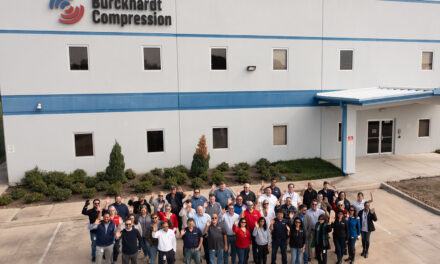 A wide variety of parameters need to be evaluated to ensure the right connectors are selected for hydraulic circuits. Here, Stäubli guides us through the points to consider
A wide variety of parameters need to be evaluated to ensure the right connectors are selected for hydraulic circuits. Here, Stäubli guides us through the points to consider
Specifying the wrong connectors for hydraulic circuits can result in a number of issues, including unreliability, poor performance, circuit failure and leakages.
So, in order to select the most suitable connectors – ones which will perform reliably for many years with minimal maintenance – a variety of parameters need to be evaluated.
Often, the specific connector requirements are viewed in isolation with flow, pressure and temperature being the main – or sometimes the only – factors considered. Much deeper evaluation is needed, however, which takes into account not only the anticipated requirements but also how these may interact with each other.
Consideration needs to be given to how the connection will be made: Is a facility for blind mating required? Is indication of successful connection needed? Will the connection be made in difficult to reach positions? Is automatic locking with single handed connection required? Will the connection be made under pressure? Would mounting several connectors onto a plate to make all connections in one, be an option?
Defining these requirements will identify the model of connector required – a compact CBX connector for difficult access conditions and for automatic connection, for example, or an SPX for blind connection.
While leakage needs to be avoided, is any spillage on disconnection permissible? If not, then a non-spill, clean break connector is required such as Stäubli’s HPX. The flat faced design of this connector also ensures that there is no ingress of air or contaminates into the circuit on both connection and disconnection.
Another important factor is the environmental conditions – such as temperature, atmosphere, corrosion, shock loading and vibration – in which the connectors will be used. If corrosion is a concern stainless steel may be the answer; if vibration may be an issue then a connector with a secure robust bayonet or screw locking system may be needed.
Additional factors include working pressure (Stäubli offers products suitable for higher pressures) and required flow rate – full bore, unrestricted flow, connectors offer the highest flow rate within any specified coupling diameter.
Choice of seal is equally important too, particularly when operating at higher temperatures – select from nitrile, fluorocarbon, ethylene-propylene or perfluoroelastomer to suit the application.
Meeting application demands
The applications for hydraulic connectors are widespread across industry – from robust high pressure connectors on steel rolling mills to compact spill free connectors on the brake lines of Formula 1 cars.
For applications where pulsating hydraulic pressure or vibration is present, such as on hydroforming which is frequently performed at a pressure of 2000 bar, Stäubli recommends its high performance, robust, hydraulic couplings which are capable of withstanding difficult operating conditions.
These feature a two-stage locking system – an initial screw thread followed by an automatically applied claw-type locking sleeve ensures a positive and secure connection under pressure, while the pre-guiding system of the plug into the socket makes connection easy. Dust caps protect the connection face on tools not in use.
Connector selection
To help you select the right connector, Stäubli engineers are trained to fully consider all aspects of the application and evaluate requirements, providing advice from the design stage onwards that will ensure the connection solution offers excellent performance, long term reliability and minimal maintenance.
Stäubli (UK)
T: 01952 671918

